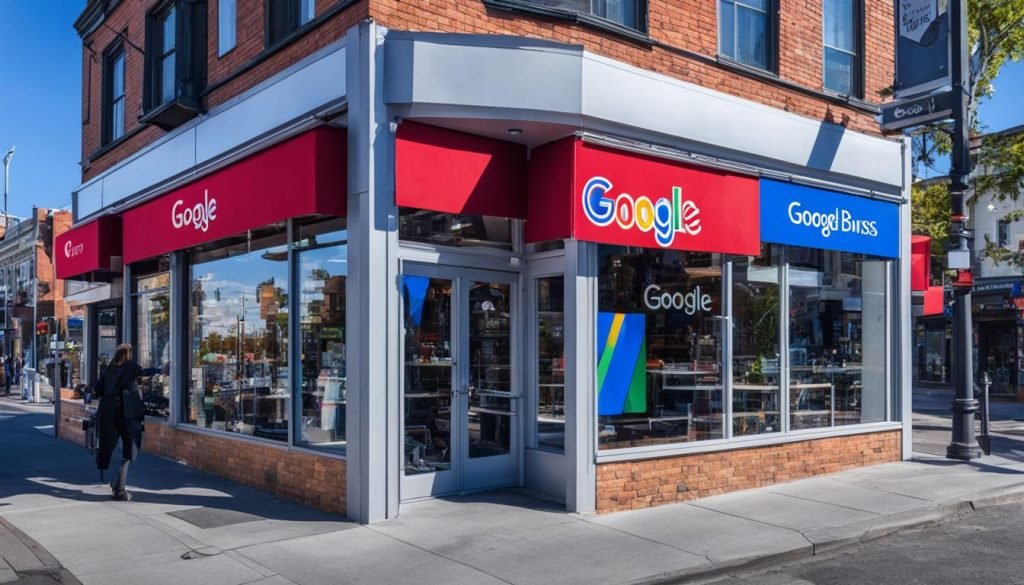Having a solid online presence is crucial for tradespeople services. Understanding the basics of Search Engine Optimisation (SEO) can significantly impact your online visibility and attract more potential customers to your doorstep.
Key Takeaways:
- Implementing SEO strategies for trades can enhance your online visibility and attract more potential customers.
- Keyword research and optimization are essential for boosting your online presence.
- Follow on-page SEO best practices to optimize your website for success.
- Maximize your local SEO efforts to attract customers in your area.
- Effective link-building strategies help build a strong online presence.
Keyword Research and Optimisation: Boosting Your Online Visibility
Keyword research is essential for improving your online visibility and attracting potential customers to your plumbing, electrical, or HVAC business. By understanding the search terms used by your target audience, you can optimize your website content with the right keywords to rank higher on search engine results pages.
Start by conducting comprehensive keyword research to identify the most relevant and valuable search terms. Look for keywords that strike a balance between search volume and competition. This will help you choose keywords that have a good search demand while being realistic to rank for.
Once you have identified the right keywords, strategically integrate them into your website content. Incorporate keywords naturally into your headings, subheadings, and body text. This will signal search engines that your website is relevant to users searching for those keywords.
Optimize other on-page elements such as meta titles and descriptions. Craft compelling meta titles that include your target keywords and accurately describe your page’s content. Write informative and enticing meta descriptions that encourage users to click through to your website.
Incorporate keywords into your website’s URL structure as well. Use descriptive URLs that include relevant keywords to improve search engine visibility.
Aside from keyword optimisation, creating valuable and informative content is crucial. Develop high-quality content that addresses the needs of your target audience. This will not only attract potential customers but also establish your authority and expertise in the plumbing, electrical, or HVAC industry.
Remember, keyword research and optimisation are ongoing processes. Regularly review and update your keywords based on search trends and user behavior. By consistently refining your keyword strategy and providing valuable content, you can boost your online visibility and attract more potential customers to your trade business.
Key points:
- Conduct keyword research to identify relevant and valuable search terms.
- Choose keywords with a balance of search volume and competition.
- Strategically integrate keywords into your website content, headings, subheadings, and meta data.
- Create valuable and informative content to establish authority in your industry.
- Regularly review and update your keywords and content based on search trends.
On-Page SEO Best Practices: Optimising Your Website for Success
To improve your website’s performance in search engine rankings and enhance its overall success, it’s important to implement on-page SEO best practices. By optimising various elements on your website, you can increase your online visibility and attract more organic traffic. Follow these key strategies:
Craft SEO-friendly URLs
Ensure that your website’s URLs are clean, concise, and relevant to the content on each page. Use keywords related to your business or industry to make it easier for search engines to understand and index your pages.
Optimise meta tags
Meta tags, including meta titles and meta descriptions, play a crucial role in attracting visitors from search engine results pages (SERPs). Craft compelling and concise meta titles that accurately reflect the content on each page, and write informative meta descriptions that entice users to click through to your website.
Use header tags for structured content
Utilise header tags (h1, h2, h3, etc.) to organise your content and make it more readable for both users and search engines. Use keyword-rich headings and subheadings to highlight the main topics on each page, helping search engines understand the context and relevance of your content.
Write compelling and informative content
Creating valuable and engaging content is essential for on-page SEO. Craft well-written, informative articles, blog posts, and product descriptions that provide value to your target audience. Use relevant keywords naturally throughout your content to improve SEO performance.
Optimise images with descriptive alt text
When adding images to your website, be sure to include descriptive alt text that accurately describes the image. This helps search engines understand the content of the image and improves accessibility for users with visual impairments. Optimised images also contribute to faster page loading speed, which is an important ranking factor.
Ensure mobile-friendly design
In today’s mobile-driven world, it’s crucial to have a website that is optimised for mobile devices. Responsive design ensures that your website looks and functions well on all screen sizes, improving the user experience and enhancing your SEO performance.
Optimise page loading speed
Page loading speed is a critical factor in both user experience and search engine rankings. Optimise your website’s loading speed by compressing images, minifying CSS and JavaScript files, and leveraging browser caching. A faster website improves user satisfaction and reduces bounce rates.
By implementing these on-page SEO best practices, you can optimise your website for success and improve its performance in search engine rankings. A well-optimised website will attract more organic traffic and help your business thrive online.
Local SEO for UK Trades: Attracting Customers in Your Area
As a tradesperson in the UK, attracting customers in your local area is essential for the growth of your business. Local SEO plays a crucial role in helping you achieve this goal. By optimizing your online presence and effectively targeting local search results, you can attract nearby customers who are actively seeking your services.
Optimize Your Google My Business Listing
One of the key steps in local SEO is claiming and optimizing your Google My Business listing. This platform provides valuable visibility within Google’s local search results, including Google Maps. Make sure to provide accurate and up-to-date information about your business, such as your address, phone number, and website URL. This helps potential customers find and contact you directly.
Encourage Positive Reviews
Positive reviews have a significant impact on attracting customers in your local area. Encourage your satisfied customers to leave reviews on platforms like Google My Business or other relevant review sites. Responding to reviews, both positive and negative, shows that you value customer feedback and are actively engaged with your local community.
Engage with Local Community
Social media platforms offer a great opportunity to engage with your local community and strengthen your local SEO efforts. Share relevant content, local events, and updates about your business to build brand awareness and foster connections with potential customers. Be responsive to comments and messages, demonstrating your commitment to providing excellent service.
Maximize Local Search Results
By employing local SEO strategies, you can maximize your visibility on local search results. Focus on optimizing your website’s content with locally relevant keywords and location-specific information. This helps search engines understand your business’s relevance to specific local queries and improves your chances of appearing prominently in local search results.
Establishing a Strong Online Presence
Establishing a strong online presence in your local area is the key to attracting nearby customers. By implementing local SEO techniques and leveraging platforms like Google My Business, you can significantly improve your visibility in local search results. This ensures that your business stands out among competitors and increases your chances of attracting customers in your area.
Effective Link-Building Strategies: Building a Strong Online Presence
When it comes to establishing a strong online presence, link-building strategies play a crucial role. By implementing effective link-building techniques, you can boost your website’s visibility, improve search engine rankings, and attract more traffic. Here are some key strategies to consider:
- Guest posting on niche websites: Collaborate with relevant websites in your industry to contribute guest posts. This allows you to reach a wider audience and earn backlinks to your site.
- Creating local business citations: Ensure your business is listed accurately on local directories, review sites, and industry-specific platforms. This helps build credibility and improves your online visibility within your local area.
- Leveraging content marketing and link attraction: Produce high-quality, shareable content that naturally attracts backlinks from authoritative sources. Engage with your audience through informative blogs, videos, infographics, and industry reports.
- Networking with industry influencers: Connect with influential individuals in your industry who have a strong online following. This can lead to collaborations, endorsements, and valuable backlinks to your website.
- Gathering testimonials and reviews: Encourage satisfied customers to leave positive reviews and testimonials on reputable review platforms. This social proof can help build trust and attract more potential customers.
- Reclaiming broken or uncredited backlinks: Identify any broken or uncredited backlinks to your website and reach out to the webmasters to have them fixed or credited. This ensures that you don’t miss out on valuable backlink opportunities.
By implementing these link-building strategies, you can establish a strong online presence, improve your search engine rankings, and drive more organic traffic to your website. Remember, quality backlinks from reputable sources are essential for long-term SEO success.
Comparing Link-Building Strategies
| Link-Building Strategy | Benefits |
|---|---|
| Guest posting on niche websites | Increases brand exposure and generates high-quality backlinks from relevant sources. |
| Creating local business citations | Improves local visibility and attracts customers looking for services in your area. |
| Leveraging content marketing and link attraction | Positions your brand as an industry expert and encourages natural backlink acquisition through valuable content. |
| Networking with industry influencers | Expands your reach and credibility by leveraging the audience and authority of influential individuals in your field. |
| Gathering testimonials and reviews | Builds trust and social proof, influencing potential customers to choose your business over competitors. |
| Reclaiming broken or uncredited backlinks | Recovers lost link equity and ensures that your website receives proper credit for backlinks. |
By incorporating these strategies into your digital marketing efforts, you can establish a robust online presence, improve search engine rankings, and attract more potential customers to your trade business.
Measuring SEO Success and Analytics: Monitoring Your Website’s Performance
Once you have implemented your SEO strategies, it’s crucial to measure their success and monitor your website’s performance. By tracking key performance indicators (KPIs) and leveraging tools like Google Analytics, you can gain valuable insights that will help you optimize your SEO efforts.
Tracking Organic Traffic Growth
One of the most important indicators of SEO success is organic traffic growth. Organic traffic refers to the number of visitors who find and visit your website through search engine results pages. By monitoring organic traffic over time, you can identify trends, assess the impact of your SEO strategies, and spot opportunities for improvement.
Use Google Analytics to track your website’s organic traffic growth. The ‘Acquisition’ section in Google Analytics provides detailed information about the sources of your website’s traffic. By examining the ‘Organic Search’ section, you can see how many visitors are coming to your site through search engines and identify which keywords are driving the most traffic.
Analyzing Keyword Rankings
Keyword rankings play a pivotal role in determining your website’s visibility in search engine results. By monitoring your keyword rankings, you can assess whether your SEO efforts are effectively targeting the right keywords and helping you rank higher in search results.
Use keyword tracking tools to monitor your keyword rankings. These tools provide valuable data on keyword positions and fluctuations, giving you insights into how your website is performing in search engine results pages.
Evaluating Conversion Rates
While attracting organic traffic is important, it’s equally crucial to convert that traffic into valuable actions, such as inquiries, sign-ups, or purchases. By tracking conversion rates, you can assess the effectiveness of your website’s user experience and the impact of your SEO strategies on driving conversions.
Use Google Analytics to set up conversion tracking and monitor your website’s conversion rates. By setting up goals and tracking conversions, you can understand which SEO tactics are driving the most conversions and make data-driven decisions to optimize your website further.
Assessing User Behavior
Understanding how users interact with your website is vital for optimizing its performance. By gaining insights into user behavior, you can identify areas for improvement, refine your website’s structure and content, and enhance the overall user experience.
Use Google Analytics to analyze user behavior on your website. Explore metrics such as bounce rate, average time on page, and pages per session to assess how users are engaging with your content. This data can help you identify high-performing pages, understand which content resonates with your audience, and optimize underperforming areas of your website.
Conducting Backlink Analysis
Backlinks play a significant role in improving your website’s authority and search engine rankings. By analyzing your backlinks, you can identify opportunities to acquire high-quality links, understand your backlink profile, and improve your overall off-page SEO.
Use tools like SEMrush, Ahrefs, or Moz to conduct backlink analysis. These tools provide valuable information about your website’s backlinks, including their quality, relevance, and the anchor texts used. By monitoring your backlink profile, you can identify potential issues and opportunities and develop a strategy to acquire more authoritative links.
Reviewing Crawlability and Indexation
Regularly reviewing your website’s crawlability and indexation status is crucial to ensure that search engines can effectively discover and index your web pages. By keeping an eye on crawl errors, XML sitemap issues, and blocked pages, you can ensure that search engines can access and index your website for optimal visibility.
Use Google Search Console to review crawlability and indexation. This tool provides detailed reports on any crawl errors, blocked pages, or issues with your XML sitemap. Addressing these issues promptly will help improve your website’s visibility and ensure that search engines can effectively crawl and index your content.
To achieve long-term SEO success, continuous monitoring and analysis are essential. Regularly assess your website’s performance using the key metrics and tools mentioned above to gain insights, identify opportunities for improvement, and adapt your SEO strategies accordingly.
Monitoring your SEO efforts allows you to stay ahead of the competition, optimize your website for better performance, and drive organic traffic growth, ultimately leading to increased online visibility and success in the trades industry.
Crafting SEO-Optimized Content for Your Trade Business
When it comes to building your trade business’s online presence, creating SEO-optimized content is key. By incorporating relevant and high-traffic keywords into your content, you can attract more organic traffic and improve your search engine rankings. But it’s not just about keywords; valuable content that addresses the needs of your target audience plays a crucial role in establishing your authority and positioning your business as a trusted expert in the trade industry.
“Valuable content that addresses the needs of your target audience plays a crucial role in establishing your authority and positioning your business as a trusted expert in the trade industry.”
Start by conducting thorough keyword research to identify the most relevant terms and phrases that your target audience is searching for. These keywords should be seamlessly integrated into your website content, including headings, subheadings, and body text. By doing so, search engines can better understand the relevance and topic of your content, increasing the likelihood of ranking higher in search results.
It’s not just about incorporating keywords; your meta titles and descriptions also play a vital role in improving click-through rates. Craft compelling and concise meta titles that accurately reflect the content of each page, while also enticing users to click and explore further. Similarly, meta descriptions provide a brief overview of your content and should be written with the aim of attracting users to click through to your website.
However, SEO-optimized content goes beyond just keywords and meta tags. It’s about providing valuable content that goes the extra mile in addressing the needs of your target audience. Think about what questions or problems your potential customers may have and create content that offers solutions or answers. This could include informative blog posts, how-to guides, case studies, or even video tutorials.
Remember that search engines value high-quality, informative, and engaging content. By regularly updating and optimizing your content, you can stay relevant and improve your search rankings. Keep in mind that your content should not only be optimized for search engines but also provide value to your website visitors.
Tips for Crafting SEO-Optimized Content
| Tips | Explanation |
|---|---|
| Conduct thorough keyword research | Identify relevant and high-traffic keywords to incorporate into your content |
| Optimize meta titles and descriptions | Improve click-through rates by crafting compelling and concise meta tags |
| Provide valuable content | Address the needs of your target audience and position yourself as a trusted expert |
| Regularly update and optimize your content | Stay relevant and improve search rankings |
Incorporating SEO best practices into your content creation strategy can significantly boost your trade business’s online visibility and attract valuable organic traffic. By understanding your target audience, conducting keyword research, and providing valuable content, you can position your business as a trusted authority in the trade industry while improving your search engine rankings. Remember to regularly update and optimize your content to stay relevant and keep up with evolving SEO trends and algorithms.
Staying Ahead with SEO Trends and Best Practices
As a tradesperson, staying ahead of SEO trends and best practices is crucial for maintaining a strong online presence and attracting potential customers. By keeping up with algorithm updates and incorporating emerging trends, you can optimize your website for better visibility and user experience.
- Monitor algorithm updates: Search engine algorithms are constantly evolving, impacting how websites are ranked. By staying informed about algorithm updates, you can adapt your SEO strategies to align with the latest requirements and trends.
- Incorporate emerging trends: Voice search and mobile optimization are two emerging trends that can significantly impact SEO. With the increasing use of voice assistants and mobile devices, optimizing your website for voice search and ensuring mobile responsiveness can improve your search rankings.
- Invest in local SEO: Local SEO is especially important for tradespeople as it helps you target customers in your specific area. By optimizing your Google My Business listing, using local keywords, and engaging with the local community, you can enhance your visibility in local search results.
- Analyze website performance: Regularly monitor your website’s performance metrics, such as organic traffic, bounce rate, and conversion rates. Utilize data-driven decision-making to identify areas for improvement and adjust your SEO strategies accordingly.
By staying ahead with SEO trends and best practices, you can ensure that your website remains optimized for search engines and user experience. Embrace the evolving digital landscape and make data-informed decisions to boost your online visibility and attract more customers to your trade business.

Why Should You Care About SEO as a Tradesman?
As a tradesman, having a strong online presence is essential for attracting customers and growing your business. With search engine optimization (SEO), you can improve your visibility on search engine results pages (SERPs), ultimately ranking higher and gaining authority and trust among potential customers.
Nowadays, when people need trade services, they turn to the internet to find local professionals. In fact, statistics show that the majority of consumers start their search for tradesmen online.
By investing in SEO, you can ensure that your business appears on the first page of search results, capturing the attention of these potential customers. This increased visibility not only brings more traffic to your website, but it also establishes your authority in the industry and instills trust in potential customers.
When your website ranks higher on SERPs, it implies that search engines recognize your business as a trusted and reputable source of trade services. This builds credibility and trust among customers who are more likely to choose a tradesman with a strong online presence and high search rankings.
Building an online presence through SEO is an ongoing process that involves various strategies and techniques. From optimizing your website content with relevant keywords to obtaining quality backlinks from reputable sources, each step contributes to your ranking and authority.
Don’t miss the opportunity to unlock the potential of your trade business with SEO. Start investing in your online presence today and watch your business thrive.
| Benefits of SEO for Tradesmen: |
|---|
| Increased online visibility |
| Higher rankings on search engine results pages |
| Establishment of authority and trust |
| Improved credibility among potential customers |
| Growth in website traffic and leads |
Takeaway Tips:
- Invest in SEO to boost your online presence as a tradesman.
- Ranking higher on SERPs builds authority and trust.
- Most people search for trade services online, so be visible on the first page of search results.
Start With the Basics: Your Google My Business Listing
Establishing a strong digital presence is vital for your trade business to thrive in the competitive online landscape. One of the most effective ways to enhance your local search results and attract potential customers is by leveraging the power of Google My Business listing.
By setting up and optimizing your Google My Business listing, you can ensure that your business information appears prominently when people search for trade services in your area. This listing acts as a virtual storefront, providing essential details and boosting your online visibility.
Why Is Google My Business Listing Important?
When potential customers search for local trade services, Google displays relevant search results along with a map showcasing nearby businesses. By having an optimized Google My Business listing, you can increase your chances of appearing in these local search results, putting your business front and centre for local customers.
Your Google My Business listing serves as a digital profile for your business, allowing you to showcase your brand, provide key business information, and engage with customers through reviews and ratings. It helps build trust and credibility, making potential customers more likely to choose your services.
Optimizing Your Google My Business Listing
To make the most of your Google My Business listing, follow these essential steps:
- Provide Accurate and Detailed Business Information: Fill out every field in your Google My Business profile, including your business name, address, phone number, and website URL (if you have one). Ensure that your information is accurate and up-to-date.
- Add High-Quality Photos: Upload high-resolution photos that showcase your work, products, or team. Visuals can make a great impression and help potential customers get a better idea of what you offer.
- Optimize Business Description: Craft a compelling and informative business description that highlights your unique selling points and services. Use relevant keywords to improve your search visibility and attract your target audience.
- Encourage Reviews and Respond: Encourage satisfied customers to leave reviews on your Google My Business listing. Respond promptly to both positive and negative reviews, demonstrating your commitment to customer satisfaction.
- Engage with Customers: Share updates, special offers, and announcements through the posting feature of your Google My Business listing. This helps you stay connected with your audience and increase engagement.
Regularly update your Google My Business listing to ensure that it remains accurate and engaging. A well-optimized and frequently updated listing will help you stand out from the competition and improve your chances of attracting local customers.

| Benefits of Optimizing Your Google My Business Listing: | Increased local visibility | Improved online credibility | Enhanced customer engagement | Higher likelihood of customer conversions |
|---|---|---|---|---|
| Increased local visibility | Improved online credibility | Enhanced customer engagement | Higher likelihood of customer conversions | |
| Increased local visibility | Improved online credibility | Enhanced customer engagement | Higher likelihood of customer conversions |
Beef Up Your Website
When it comes to optimizing your website for SEO, there are several key areas to focus on. By ensuring your website is mobile-responsive, optimizing site architecture, improving page loading speed, and creating quality content, you can enhance your online visibility and attract more organic traffic. Here are some strategies to beef up your website:
1. Mobile Responsiveness
A mobile-responsive website is essential in today’s digital landscape. With more users accessing the internet on mobile devices, it’s crucial to provide a seamless browsing experience across different screen sizes. By implementing responsive design principles, your website will automatically adapt to the user’s device, whether it’s a desktop, tablet, or smartphone.
2. Site Architecture
Optimizing your site architecture involves structuring your website in a logical and user-friendly manner. Make sure your navigation menu is clear and easy to navigate, allowing visitors to find the information they need quickly. Organize your content into relevant categories and use internal linking to establish connections between different pages on your site.
3. Page Speed
Page loading speed plays a crucial role in user experience and SEO. Slow-loading pages can lead to high bounce rates and negatively impact search engine rankings. To improve page speed, optimize image sizes, minify CSS and JavaScript files, leverage browser caching, and use a reliable hosting provider. Regularly test your website’s speed using tools like Google PageSpeed Insights to identify areas for improvement.
4. Quality Content
Content is king when it comes to SEO. Producing valuable, informative, and engaging content not only attracts visitors but also encourages them to stay longer on your site and increases the likelihood of conversions. Conduct keyword research to identify relevant topics and incorporate them naturally into your content. Regularly update and optimize your content to stay relevant and provide fresh insights for your audience.
By focusing on these areas of website optimization, you can create a professional-looking website that is easy to navigate, loads quickly, and provides valuable information to visitors. Regularly updating and optimizing your website will improve its performance and search engine rankings, ultimately driving more organic traffic to your business.
Create Link-Worthy Assets
When it comes to boosting your organic presence and improving your search engine rankings, creating link-worthy assets is essential. These assets can include valuable and informative blog content, interactive tools or calculators, and data studies that provide unique insights.
By offering high-quality assets, you can attract links from other websites in your industry. These backlinks not only drive traffic to your site but also enhance your credibility and authority in the eyes of search engines. This, in turn, can boost your organic search visibility and attract even more quality backlinks.
To make the most of your link-worthy assets, it’s crucial to promote and optimize them. Share your blog content on social media, engage with your audience, and encourage them to link to your valuable resources. Additionally, optimizing your assets for search engines with relevant keywords and meta data can help improve their visibility and attract even more backlinks.




